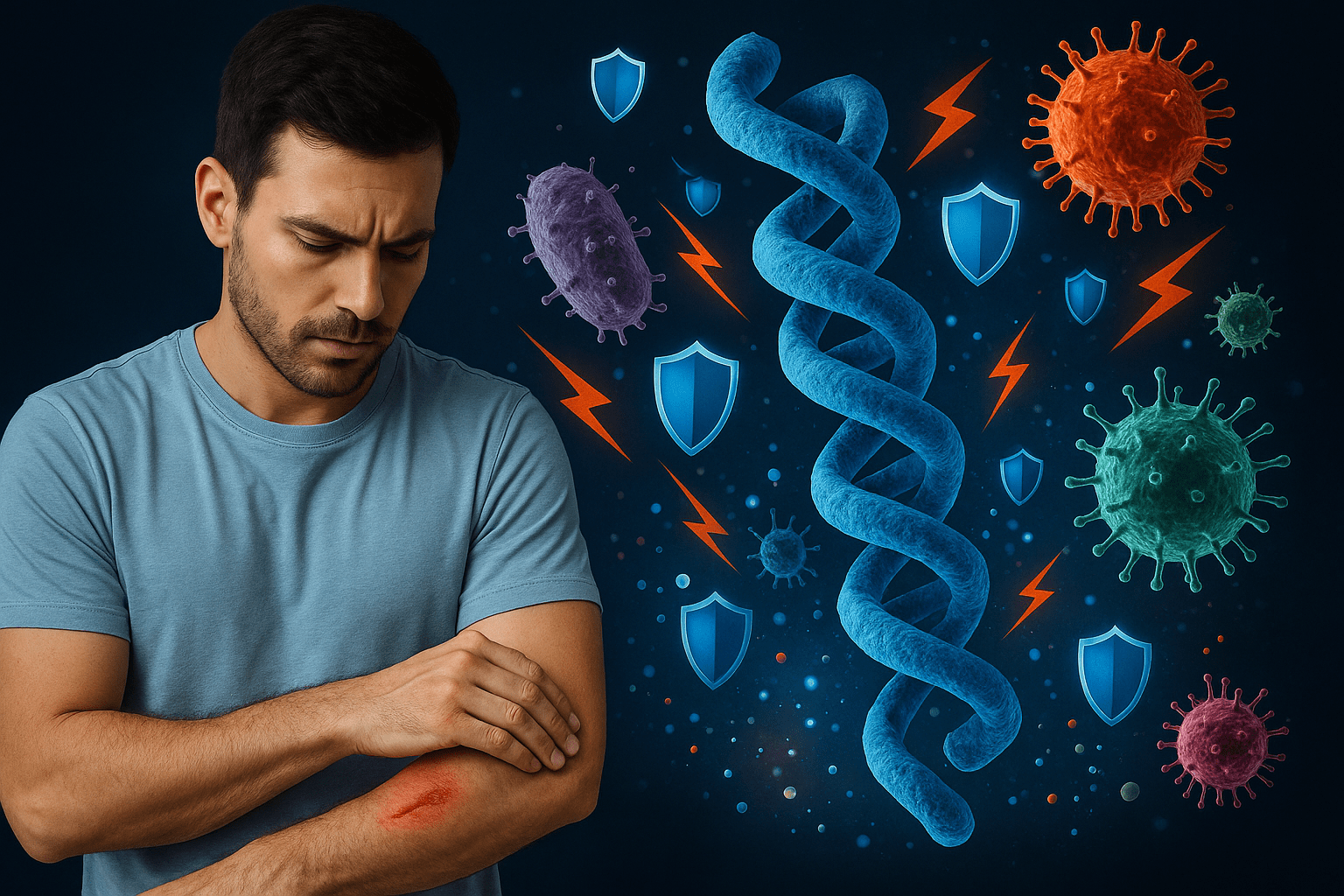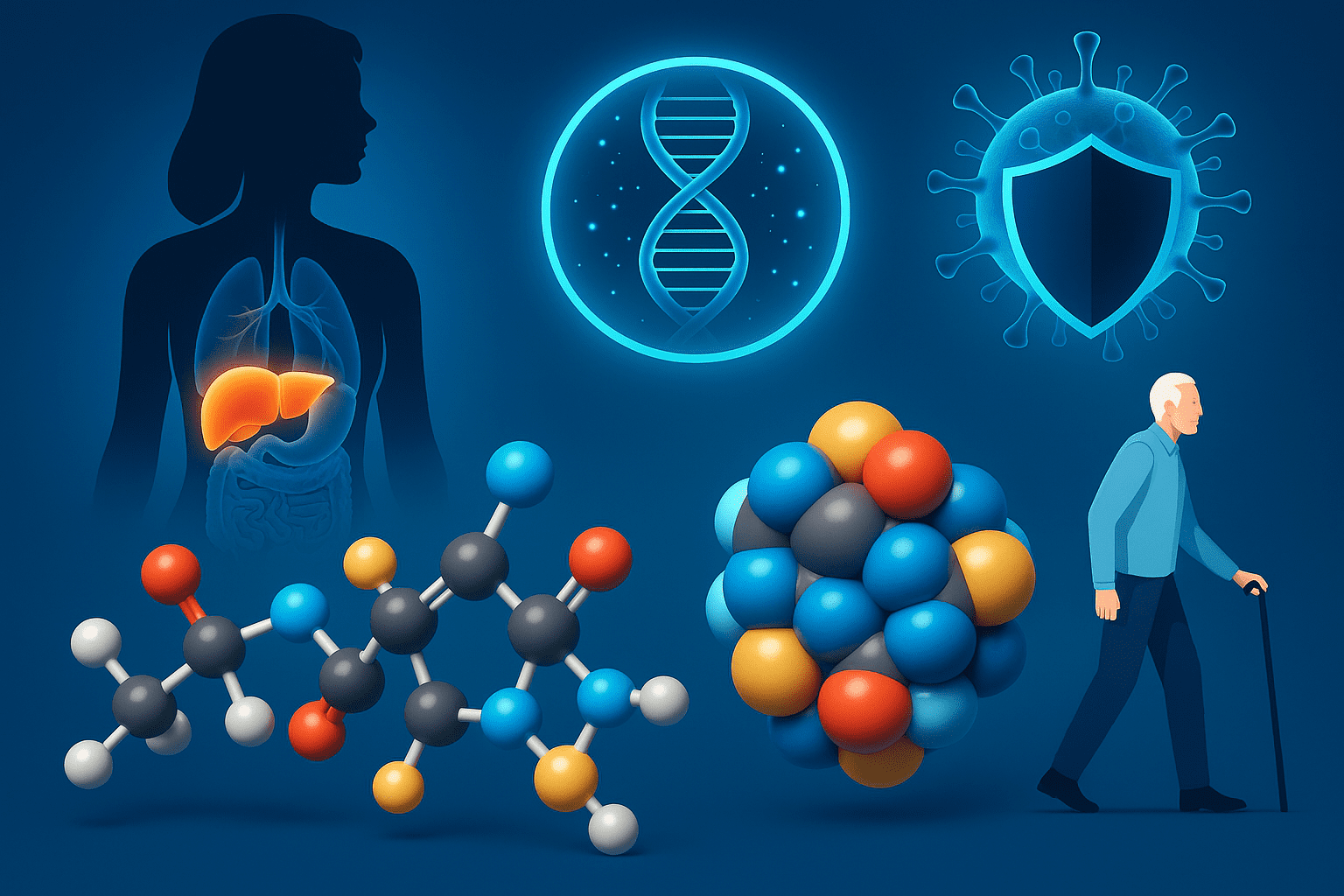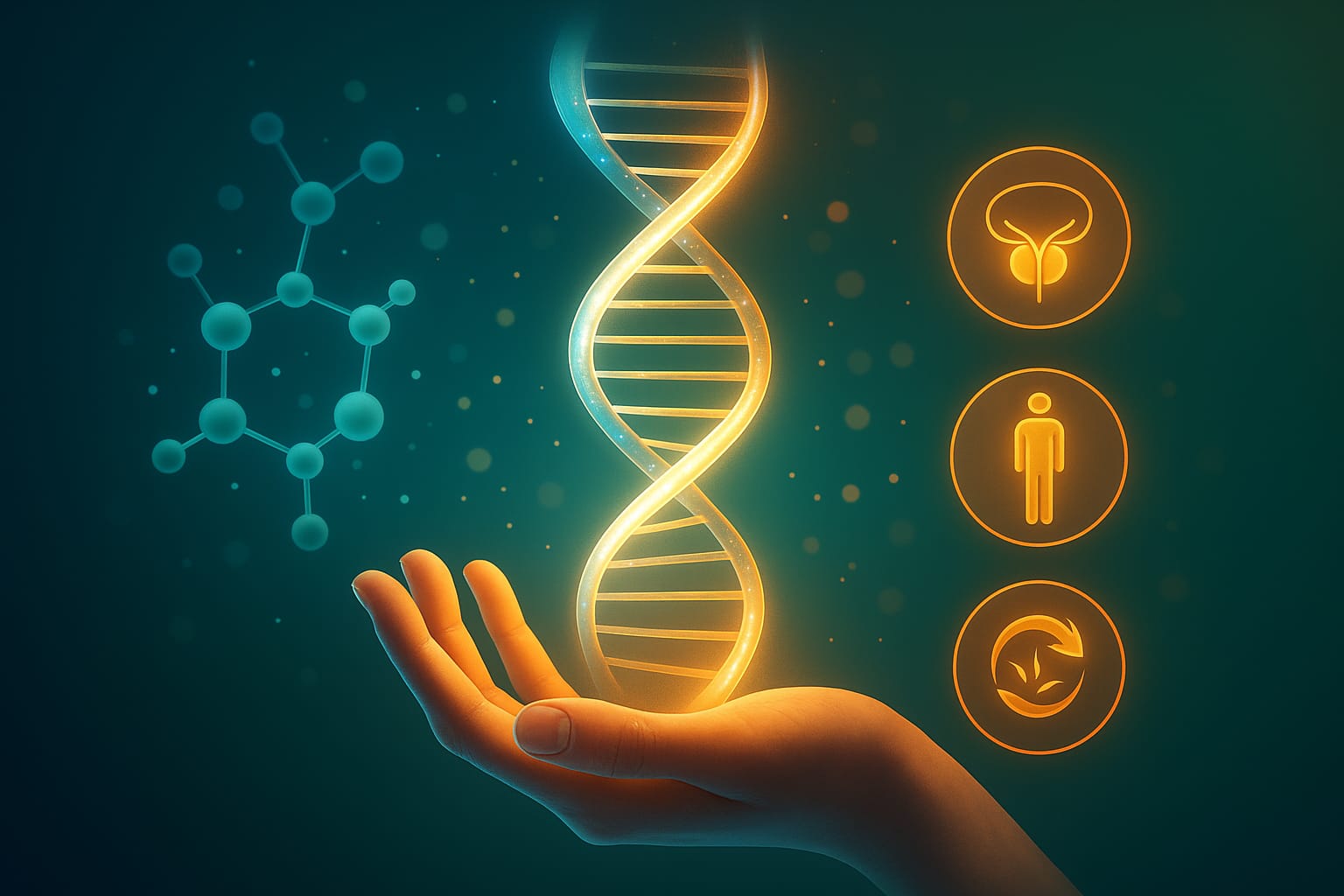Have you ever wondered how the body fights germs or how quickly a scratch can be healed? Get to know Cathelicidin LL-37 Peptide, a minute protein that has an essential task of keeping you healthy.
Cathelicidin is a small molecule that plays a significant role in your immune system. It not only destroys dangerous bacteria but also reduces swelling and accelerates the healing process of cuts. LL-37 is a multi-purpose peptide that is used in most of your work every day.
Scientists are excited about LL-37 as it may be the door to new avenues of combating infections and addressing health problems. This article argues that LL-37 helps maintain your safety and health.
Part 1: What is Cathelicidin LL-37 Peptide?
Antimicrobial peptides (AMPs) are naturally produced antimicrobials that are part of the body and are primarily located in protective layers, such as skin, mucus, and tears.
The special thing about LL-37 is that it does more than just fight germs. It can kill a wide range of bacteria, viruses, and fungi. It guides immune cells to the exact place where they are needed.
Research suggests that it may be developed into a novel treatment and has high potential to become a drug for use in various diseases. (Adam et al. 2016)
Here’s how LL-37 makes it happen.
Part 2: Cathelicidin LL-37 Peptide Mechanism of Action
The treatment of bacteria is becoming increasingly difficult, as most bacteria have now developed resistance to antibiotics.
Cathelicidin LL-37 Peptide is one of the most crucial AMPs in humans. It is kept in some immune cells in an inactive state known as hCAP18.
Here’s how LL-37 works:
- It gets attached to the surface of bacteria, viruses, or fungi.
- It disrupts their wall of protection (the membrane).
- It may sometimes create tiny holes (pores), and at other times, it may form a surface-like texture.
- The germs rupture and perish, which prevents the spread of the infection. (Shahmiri et al. 2016)
The structure of LL-37 is unique: one part of it is hydrophilic, while another part has a positive charge. This facilitates the adherence of LL-37 to the negatively charged walls of bacteria.
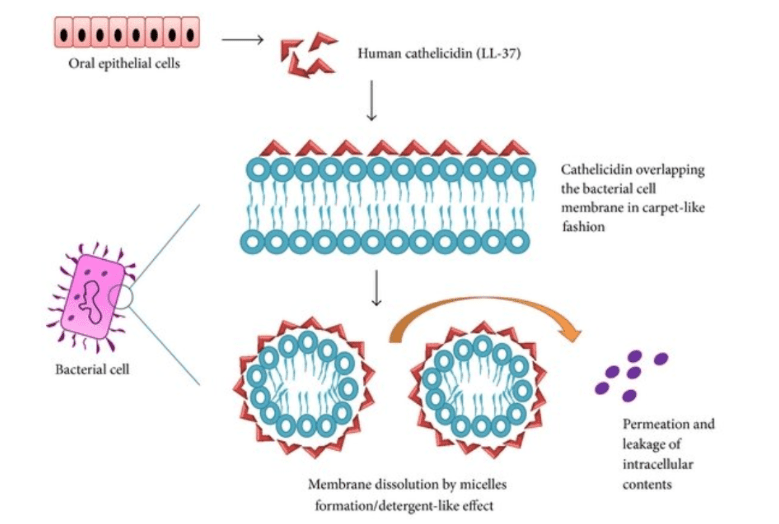
Mechanism of antimicrobial action of human Cathelicidin LL-37 Peptide.
However, LL-37 is not just about attacking germs; it also helps regulate your immune system. It is a peptide that acts in more than one manner to protect you.
Part 3: The Role of Cathelicidin LL-37 Peptide
LL-37 is not merely a jack-of-all-purpose molecule, and it has numerous hats in your body. This small peptide works 24/7 to defend and repair, whether it is fighting off harmful germs or maintaining your immune system in balance.
We must know its two most significant functions.
LL-37 as an Antimicrobial Shield
Cathelicidin LL-37 Peptide is a kind of an inner natural shield. It aids in combating various types of germs and promotes healing.
- Kills Bacteria: LL-37 can destroy the walls of the dangerous bacteria. Scientists declare that it is effective in several ways: it covers the surface in the form of a carpet, creates tiny holes, and bends the wall until it collapses.
- Protects against Viruses: It prevents viruses from easily accessing your cells and causing illness.
- Prevents Fungi: LL-37 also protects against fungi, including yeast, which can cause an infection.
- Helps Healing: LL-37 is not only a germ killer, but also helps in healing. It promotes the healing process of wounds, minimizes the detrimental swelling, and directs the immune cells to their destination. (Khurshid et al. 2017)
Due to these abilities, scientists are attempting to develop LL-37-based medicines to treat skin issues, heal wounds, and even prevent bacterial adherence to medical implants.
LL-37 is a defender and a curer; hence, it is among the most powerful natural protectors of the body.
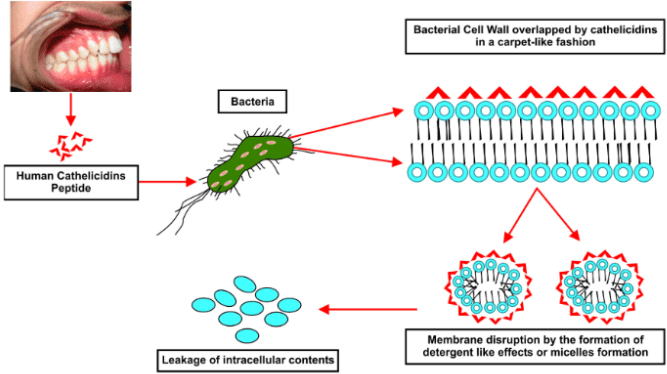
LL-37 as an Antimicrobial Shield
Having resisted the invaders, LL-37 resorts to another critical task.
LL-37 as an Immune Regulator
Cathelicidin LL-37 Peptide is a germ-fighting agent and also useful in maintaining a healthy immune system balance.
- Controls Inflammation: The process of swelling and redness occurs naturally in your body whenever you get a cut or an infection. This reaction may be inflammatory, and with the help of LL-37, your body is not so inflamed and harmed by the healthy tissue.
- Helps to Heal: It assists in the creation of new cells and tissues, which operate as a natural healing kit to facilitate quick wound healing.
- Maintains Balance: LL-37 ensures your immune system is not too strong, so it doesn’t attack your body.
Due to these properties, scientists are investigating LL-37 and its smaller fragments as new treatments. These are smaller versions that are simpler to produce, harmless to human cells, and effective nonetheless. (Zhuo et al. 2022)
LL-37 is a multifunctional peptide that serves as both a peacekeeper and an antimicrobial, which helps keep your immune system in check, allowing your body to heal itself.
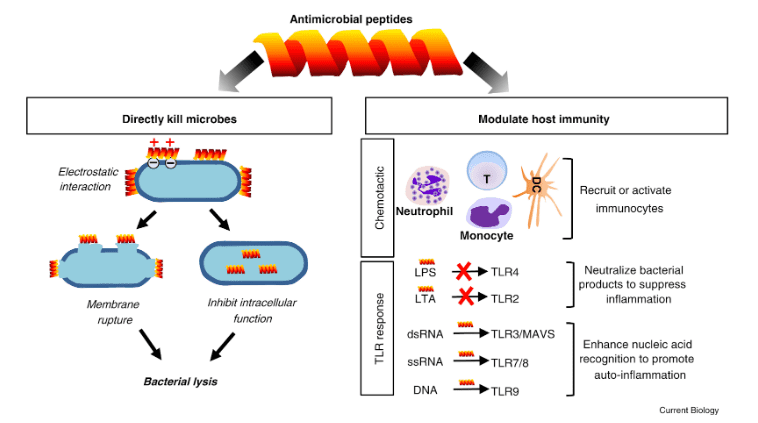
LL-37 as an Immune Regulator
Due to these remarkable functions, scientists are currently considering LL-37 as a promising medical aid.
Part 4: The Future of LL-37 in Medicine
Scientists are enthusiastic about the Cathelicidin LL-37 peptide, as it could open the door to new, miraculous therapies. LL-37 may play a crucial role in promoting human health in the future, whether by combating harmful germs or accelerating wound healing.
The following are some of its possible applications:
- New Antibiotics: Many bacteria are increasingly resistant to antibiotics prescribed regularly, which is why LL-37 may incentivize the pharmaceutical industry to pursue new antibiotics to combat superbugs.
- Increased Rate of Healing: LL-37 may offer people with persistent wounds, such as those with diabetes, the ability to hasten the rate of healing.
- Decrease in Inflammation: Can help alleviate inflammatory disorders, such as arthritis and eczema, by reducing the inflammation that causes pain.
- Immune-system boosting effect: LL-37 can bolster the immune systems of individuals who tend to get sick often.
Additionally, in light of the potential benefits of the practice, scientists also caution about some dangers.
Part 5: Side Effects of Cathelicidin LL-37 Peptide
Though LL-37 is excellent, there are a few things to remember:
- Overactivity: An excess of LL-37 may lead to the overreactivity of your immune system, resulting in undesired inflammation.
- Allergies: Only a few instances of artificial enhancement of LL-37 causing allergic reactions are reported.
- Understanding: Scientists still lack a comprehensive understanding of LL-37; therefore, caution is prudent when integrating it into therapies due to the risk of undesired outcomes.
- Expensive Research: LL-37-based medicines may be costly to develop, thus may be initially limited.
These issues underscore the importance of continued research before LL-37 is established as a standard intervention.
Part 6: Where to Get Cathelicidin LL-37 Peptide?
The selection of a supplier implies choosing someone whom you trust to be reliable and trustworthy. When you have a good supplier, you will receive pure and potent peptides, with no hidden agendas or delays. Continue reading to discover a leading source that offers excellent service and prompt delivery.
NuScience Peptides
A renowned brand in research peptides, admired by the labs and professionals. Why pick NuScience Peptides for Cathelicidin LL-37:
- Pure Products
The batches are inspected for purity and quality. There are no extras – pure lab-grade peptides that can be relied upon.
- Quick Shipping
Order before 12 pm (EST) and it will be shipped on the same day. Get your peptides fast!
- Free Shipping on Big Orders
Spend $200 or more, and you will not be charged for shipping.
- Helpful Support Team
Have questions? Their friendly team answers quickly.
- Trusted by Pros
Their products are produced in a considerate manner, as in the case of Cathelicidin LL-37, compared to other peptides.
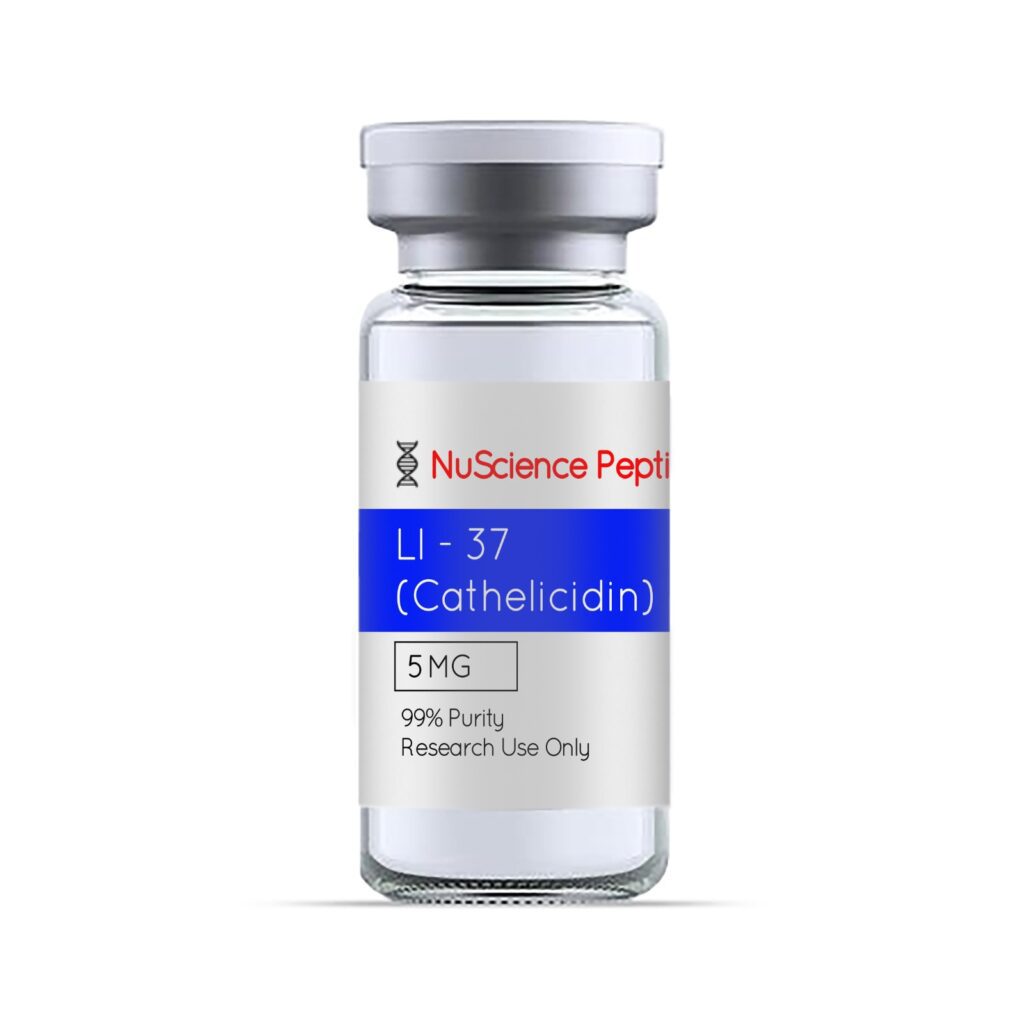
Cathelicidin LL-37 Peptide from NuScience Peptides
Visit their store today for top-quality Cathelicidin LL-37 Peptide that delivers. Click below to shop with confidence.
Explore NuScience Peptides Now.
Conclusion
Cathelicidin LL-37 Peptide is small in stature but is still an immensely effective peptide with the ability to guard the body in functions similar to a natural antibiotic. It can destroy bacteria, viruses, and fungi, diminish inflammation, and accelerate wound healing.
Scientists hope that it will produce new solutions to superbugs, chronic ulcers, and other illnesses. Although studies are still ongoing, it is already being used in advanced research and thus may hold considerable promise for the future of medicine.
Disclaimer
This publication is offered as informational and educational content only and is not intended to serve as medical advice. Cathelicidin LL-37 Peptide uses must be investigated under the proper care of an authorised medical practitioner. NuScience Peptides is mentioned as a research supplier; always confirm the credibility and quality before making a purchase.
References
Khurshid, Z., Naseem, M., Asiri, F. Y. I., Mali, M., Khan, R. S., Sahibzada, H. A., Zafar, M. S., Moin, S. F., & Khan, E. (2017). Significance and diagnostic role of antimicrobial cathelicidins (LL-37) peptides in oral health. Biomolecules, 7(4). https://doi.org/10.3390/biom7040080
LL-37: Cathelicidin-related antimicrobial peptide with pleiotropic activity. (n.d.). Pharmacological Reports, 68(4), 802–808. https://doi.org/10.1016/j.pharep.2016.03.015
Shahmiri, M., Enciso, M., Adda, C. G., Smith, B. J., Perugini, M. A., & Mechler, A. (2016). Membrane core-specific antimicrobial action of cathelicidin LL-37 peptide switches between pore and nanofibre formation. Scientific Reports, 6(1), 1–11. https://doi.org/10.1038/srep38184
Zhuo, H., Zhang, X., Li, M., Zhang, Q., & Wang, Y. (2022). Antibacterial and anti-inflammatory properties of a novel antimicrobial peptide derived from LL-37. Antibiotics, 11(6). https://doi.org/10.3390/antibiotics11060754

